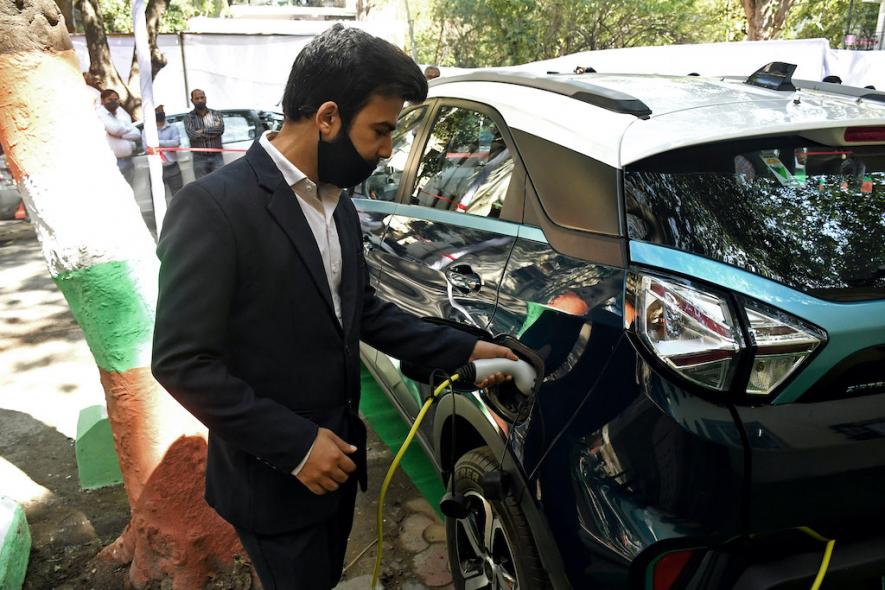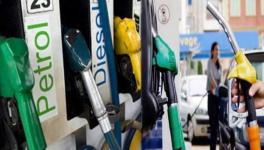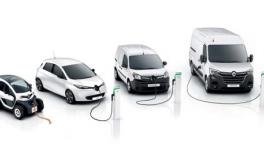Manufacture Battery Components Domestically to Ensure Safety in Electric Vehicles, say Experts

A resident member tests a new electric vehicle charging station, at Vasant Kunj, in New Delhi
The recent increase in incidents of electric batteries catching fire has cast a shadow over the electric vehicle (EV) industry and dampened consumer confidence. At least 38 electric two-wheelers have burst into flames in the last four months, prompting many big players to recall close to 7,000 e-two wheeler units and placing brakes on the rapid growth of EVs in India.
NewsClick talked to several EV industry experts to understand possible reasons behind these fires. The exports highlighted gaps in the protocols across quality, testing and manufacturing and talked about what the government and industry players must do to ensure safety standards for the EV batteries.
Outlining the reasons behind batteries catching fire, Sagar Mitra of the Energy, Science and Engineering Dept of Indian Institute of Technology, Bombay, pointed to the stability of battery chemistries being used in India.
"Most batteries use Nickel Manganese Cobalt composition, which does not have the highest stability standards," Mitra said.
Rahul Lamba, chief executive officer, The Energy Company, further explored this aspect and said, "The poor design of battery packs is an area of concern, which battery manufacturers need to address. The cells in a battery should be packaged so that even if there is a failure in a few cells, it is not causing a domino effect and impacting neighbouring cells."
"High-quality battery management systems (BMS) are an integral safety feature. Batteries are thermally stable up to a certain temperature, beyond which they risk going into a thermal runaway state. The BMS's job is to cut off this temperature rise to avoid overheating. In India's EV industry, very few are currently developing their own BMS but using them off the shelves. These need to be designed in tandem with other battery parts and customised for Indian circumstances."
The experts also touched upon gaps in testing standards in India.
Shreshth Mishra, co-founder, Simple Energy, said that the testing standards in India should be customised in terms of temperature variations, geography, road conditions and riding standards.
"In so many instances, our two-wheelers are overloaded beyond capacity with three to four riders, but this isn't accounted for in testing. Testing and safety standards need to come from the original equipment manufacturers as much as they should come from the government," Mishra added.
Lamba brought out two clear gap areas in existing testing standards.
"An important component of a battery is the connector. Currently, no test calls out the lifecycle of a connector used in the battery. In most failure instances, the connector pins melt, and that's the point where the first short circuit happens, which triggers the entire process towards thermal runaway."
As per Lamba, another gap concerns how batteries are vibration tested in India. No real-world scenario is created in the labs when testing the impact of vibration on batteries.
"The intensity of the vibrations in a lab is much lower than what it would be outside when in the vehicle."
Mitra, who also leads the research team at the National Centre for Solar Photo Voltaic Research and Education, brought out an important knowledge and research gap.
"In India, knowledge about cell chemistry, battery pack, manufacturing and assembling is still low. For example, research on battery pack design is next to zero, which is such an integral part of battery production. The EV industry is growing, and many players are trying to play catch, but we need to invest in better knowledge, research and development for long term sustainability and safety."
As a solution for high safety standards in batteries, the experts unanimously agreed on the need to manufacture all battery components domestically- cells, packaging, BMS, etc.
"Domestic battery manufacturers need to be given incentives to invest in research and development for better quality batteries. While the Central government's FAME (Faster Adoption and Manufacturing of Hybrid and Electric vehicle) scheme incentivises domestic battery manufacturing, the sad reality is that many manufacturers are getting parts from China, rebranding them under an Indian supplier, and in this way meeting the FAME criteria of availing subsidy, but still not producing in-country. The government needs to be more aware of such misutilisation," Lamba said.
The experts were unanimous on solutions that can enhance accountability in the system. A repository of thermal runaway incidents reported in EVs should be set up at the central and state levels. The data should be publicly available, and each event should have a root cause analysis, which would help the complete ecosystem understand the reasons behind the failures and ensure that improvements are incorporated into subsequent products.
The writer is a freelance journalist.
Get the latest reports & analysis with people's perspective on Protests, movements & deep analytical videos, discussions of the current affairs in your Telegram app. Subscribe to NewsClick's Telegram channel & get Real-Time updates on stories, as they get published on our website.
























